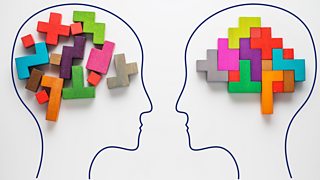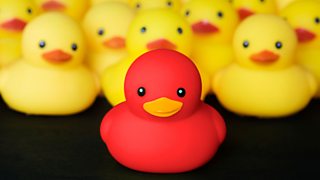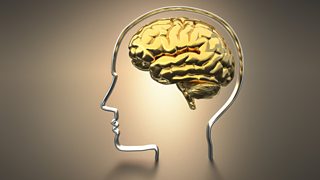Why it鈥檚 strong to be ambivalent
In an age of certainty, of assertions without facts, Mark O’Connell is making the case for sitting on the fence. Few decisions in life are truly clear-cut. There are often valid points on both sides of an argument, and most of us have complex and mutually contradictory views on issues small and large. Modern life is, after all, complicated.
The Courage of Ambivalence explores just how central ambivalence is to the human experience. What might happen if we started to tune into our own ambivalence in our personal lives, our politics and our culture? It’s time we had the courage to embrace unsureness and indecision.

-
![]()
The Courage of Ambivalence
Mark O'Connell urges us to have the courage of ambivalence.
Ambivalence is part of being human
Dr Hili Razinsky is an Israeli philosopher and the author of Ambivalence: A Philosophical Exploration. She says having two or more opposing attitudes towards a person or thing is part of being human. “It’s just very basic to our acting, thinking, wanting, judging, loving,” says the philosopher. It’s impossible to understand a person without understanding ambivalence.
Throughout life, few decisions are truly a clear-cut yes or no.
From our earliest days as infants our inner lives are defined by these kinds of complex and conflicting emotions: to be a child is to be simultaneously overwhelmed with love and hatred for one’s parents.
Ambivalence is central to human psychology; it’s a fundamental and indivisible truth of human nature.

There’s a value in not being sure
John O’Connor, Assistant Professor of Clinical Psychology at Trinity College Dublin, says there is a pressure to be sharp in relation to things. To know exactly what we think about an issue. To have a very clear message. “At times, if we don’t communicate a strong message we’re not listened to,” he says.
But in the experience of Andrew O’Hagan (biographer for the subject of much ambivalence, Julian Assange), the red-faced, ultra-certain people who shout their great maxims and beliefs without giving an inch are often wrong in the end. “It wasn’t that they didn’t have good positions, it wasn’t that they didn’t have good hearts, it wasn’t that they were savage and stupid and unrelatable,” he says, “it’s that they didn’t actually listen to the other side of their own nature.”
We shouldn’t be scared to listen to our conflicting thoughts and feelings. Issues are rarely black and white.
Does putting yourself in someone else’s shoes change your view?

Claudia Hammond discusses what happens in your mind when you put yourself in someone else's shoes.
There’s a value in being moved by the opinions of others
Allowing ourselves to be easily swayed, and persuaded by the opinions of others, is often seen as a sign of intellectual weakness. But actually, isn’t it just taking stock of context and letting new intel influence our decisions?
Having two or more opposing attitudes towards a person or thing is part of being human.
The way humans come to decisions about who we are and what we feel about things is a complex process full of trade-offs and adjustments. There is nothing wrong with being openminded and flexible. It might just help us come to the right conclusion in the end.
Ambivalence allows us to love ourselves
John O’Connor believes that through recognising the ambivalence we feel towards others we can understand them better, and really learn to understand ourselves.
“By tuning into the hatred we have for those we love and the love we have for those we hate we can begin to then see them in a fuller way,” says the professor. It allows us to experience a person in a more real and total way.
Recognising that we can both love and hate the same thing in turn allows us to tolerate ourselves more.
Ambivalence helps us to interact and negotiate
A lot of us will think that if we are unsure on an issue, we shouldn’t speak up. But ambivalence can create a generative space for discussions.
If we hate something a person stands for, and define ourselves totally against it in every way, then the two of us won’t be able to speak. “It’s the end of human dialogue,” says Andrew O’Hagan. On the international stage, intransient opinions mean there’s no room for negotiation.
But ambivalence can act as a bridge. We can walk to the middle and say there are things on your side of the river that I quite like. And there are things on my side of the river that you might like too – why don’t you come and take a look?
We demand that our leaders show decisiveness and resolve but open ambivalence should also be seen as a legitimate position. It makes meeting in the middle possible.
How these peashoots made a decision

Dr Monica Gagliano of the University of Western Australia carried out an experiment.
Ambivalence breeds creative thought
Ambivalence is a valuable tool in art and culture.
Ambivalence allows for speculative, productive thought, new ideas, new knowledge and new feelings. These allow us to grow.
Emilie Pine is the author of a collection of essays entitled Notes to Self, and the spirit of uncertainty and experimental self-questioning is at the very heart of her work.
Emilie believes ambivalence is “an ok place to be… It makes us feel unsettled and uncertain because there aren’t these definite guidelines to it, but at the same time it’s a location that allows for other possibilities.” When you’re standing at the centre of the crossroads, all directions are equally possible. And that’s a creative as well as a challenging place to be.
Ambivalence can be seen as a kind of intellectual laziness and inattention, but to be ambivalent can actually lead to a more creative and fertile way of encountering the world. Rather than looking at a piece of art and immediately thinking ‘this is great’ or ‘this is terrible’, we should look at how it might be using ideas we’re unfamiliar with or asking questions of us.
Ambivalence allows for speculative, productive thought, new ideas, new knowledge and new feelings. These allow us to grow.
-
![]()
The Courage of Ambivalence
Mark O'Connell urges us to have the courage of ambivalence.
-
![]()
16 personality traits and what they mean
Have you ever got muddled over the meaning of masochist, misogynist or misanthrope?
-
![]()
Ways you are being influenced without even realising it
The enigmatic social science that's controlling you right now.
-
![]()
The glories of being quiet
Why we need silence, how we lost it and where we might go to find it again.




